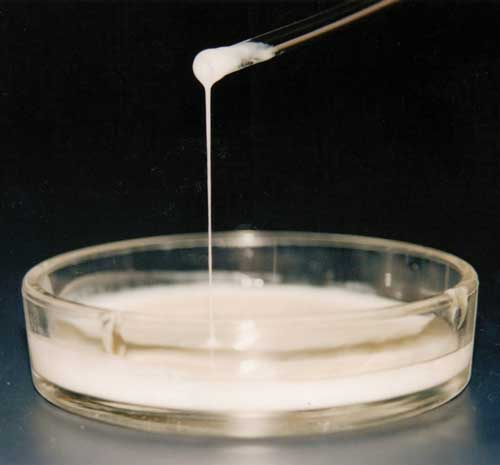Dairy thickener has probiotic potential; Ultrasonics separate fat in milk
CUTTING EDGE TECHNOLOGY
 Natural dairy thickener with probiotic potential
Natural dairy thickener with probiotic potential
Microbiologists at Oregon State University have discovered and helped patent and commercialize a new type of dairy or food thickener, which may add probiotic characteristics to food applications. The global market for food-grade polymers approaches $7 billion, and there are estimates the U.S. spends up to $120 billion a year on probiotic products such as yogurt, sour cream and buttermilk.
The new product is produced by a natural bacterium that was isolated in Oregon. It’s the result of decades of research, beginning in the early 1990s when a novel polymer with an ability to rapidly thicken milk was discovered by an OSU microbiologist. The polymer is known as Ropy 352 and produced by a non-disease-causing bacterium.
“This is one of many naturally occurring, non-disease-causing bacterial strains my research program isolated and studied for years,” said Janine Trempy, an OSU microbiologist. “We discovered that this bacterium had a brand-new, never-before reported grouping of genes that code for a unique polymer that naturally thickens milk. In basic research, we’ve also broadened our understanding of how and why non-disease-causing bacteria produce polymers.”
The polymer appears to give fermented foods a smooth, thick, creamy property, and may initially find uses in sour cream, yogurt, kefir, buttermilk, cream cheese and artisan soft cheeses. Composed of natural compounds, it offers a slightly sweet property and may improve the sensory characteristics of low-fat or no-fat foods. And unlike other polymers that are now commonly used as thickeners, it may add probiotic characteristics to foods, with associated health benefits.
“There are actually very few new, non-disease-causing bacterial strains that produce unique polymers with characteristics desirable and safe for food products,” Trempy said. “In the case of a dairy thickener, for instance, a bacterium such as Ropy 352 ferments the sugar in the milk and produces a substance that changes the milk’s properties.”
OSU recently agreed to a nonexclusive license for the patented Ropy 352 technology to a global market leader for dairy starter cultures. It’s also available for further licensing through OSU’s Office of Commercialization and Corporate Development.
Ultrasonics separate fat from whole milk
Australian researchers have achieved milkfat separation at large scale using an ultrasonic separation technique. Scientists from Swinburne University of Technology in Australia and the Commonwealth Scientific and Industrial Research Organization (CSIRO) have jointly demonstrated cream separation from natural whole milk at liter throughput rates using ultrasonic standing waves—a novel, fast and nondestructive separation technique typically used only in small-scale settings.
The project, co-funded by the Geoffrey-Gardiner Dairy Foundation and the Australian Research Council, uses an ultrasound technique to separate fat globules from milk with high volume throughputs up to 30 liters per hour, opening doors for processing dairy products on an industrial scale.
“We have successfully established operating conditions and design limitations for the separation of fat from natural whole milk in an ultrasonic liter-scale system,” said Thomas Leong, an ultrasound engineer and a postdoctoral researcher from Swinburne. “By tuning system parameters according to acoustic fundamentals, the technique can be used to specifically select milkfat globules of different sizes in the collected fractions, achieving fractionation outcomes desired for a particular dairy product.”
The technology consists of two fully-submersible plate transducers placed on either end of a length-tunable, rectangular reaction vessel that can hold up to two liters of milk. For single-plate operation, one of the plates produces one or two megahertz ultrasound waves, while the other plate acts as a reflector. For dual-plate operation, both plates were switched on simultaneously, providing greater power to the system and increasing the acoustic radiation forces sustained.
To establish the optimal operating conditions, the researchers tested various design parameters such as power input level, process time, transducer-reflector distance and single or dual transducer set-ups. They found that ultrasound separation makes the top streams of the milk contain a greater concentration of large fat globules (cream), and the bottom streams more small fat globules (skimmed milk), compared to conventional methods.
“These streams can be further fractionated to obtain smaller and larger sized fat globules, which can be used to produce novel dairy products with enhanced properties,” Leong said. Dairy studies suggest that cheeses made from milk with a higher portion of small fat globules have superior taste and texture, while milk or cream with more large fat globules can lead to tastier butter.
The researchers’ next step is to work with small cheesemakers to demonstrate the efficacy of the technique in cheese production.
If you are working on or know of some cutting edge technology that you would like to be featured in this column, please send an email to [email protected].
